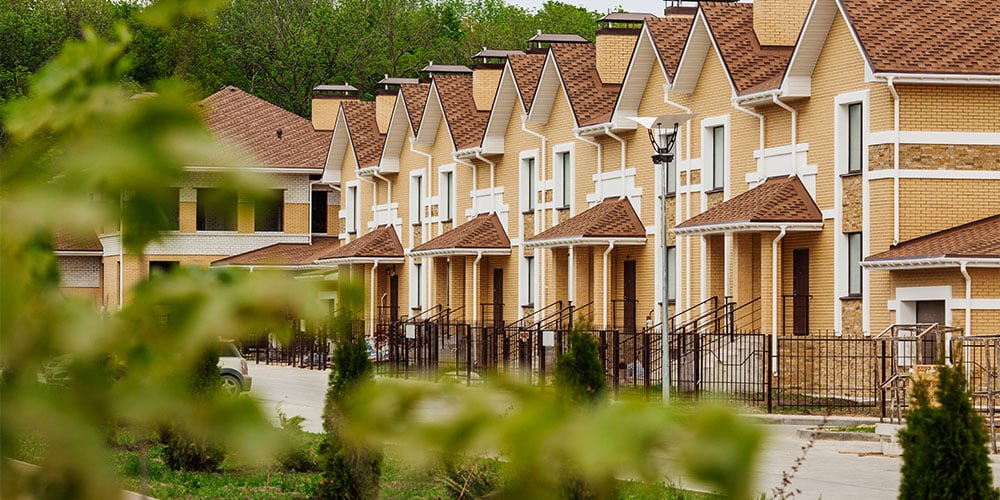
- A 9% VAT rate now applies to qualifying apartment sales.
- Measure targets multi-unit apartment blocks, boosting development viability.
- Aims to lower costs amid rising construction and financing pressures.
- Supports housing supply, particularly in urban areas with high demand.
- Scope depends on “social policy” definition under EU VAT rules.
- Developers, investors, and advisors should review eligibility carefully.
- Revenue guidance is expected to clarify practical application.
What has been announced
The Budget introduces a temporary 9% VAT rate for the VATable supply of qualifying apartments, effective immediately that will expire on 31st of December 2030. This measure directly improves the financial viability of residential development projects by reducing the tax burden on developers facing rising construction and financing costs.
It comes at a time when developers are grappling with rising construction costs, increased financing burdens, and broader economic uncertainty. By lowering the VAT rate applicable to qualifying apartment sales, the Government aims to reduce the overall cost base for developers, thereby encouraging new supply and helping to ease the housing crisis.
This VAT reduction forms part of a wider strategic initiative to stimulate investment in residential housing and unlock supply across the market. It is a targeted intervention, representing a specific carve-out from the standard 13.5% VAT rate that continues to apply to most other commercial and residential property transactions. The measure is intended to support the delivery of new housing stock, particularly in urban areas where apartment developments are more prevalent and where affordability challenges are most acute.
What apartments qualify
The new 9% rate applies specifically to what is described in the legislation as:
“The supply of housing, as part of a social policy, being the supply of an apartment, used or to be used for residential purposes, in an apartment block.”
The definition of an “apartment block” is also provided, and it refers to:
“A multi-storey residential property comprising at least three apartments with grouped or common access.”
This definition is important because it sets clear parameters around the types of developments that qualify for the reduced VAT rate. It excludes smaller-scale developments such as duplexes or standalone units, focusing instead on larger, multi-unit buildings that are more likely to contribute meaningfully to housing supply in high-demand areas.
Potential limitation of scope
The reference to “social policy” is a requirement under EU VAT law. Under the EU VAT Directive, Member States are permitted to apply reduced VAT rates to certain categories of goods and services, including housing, provided that the measure is justified on social grounds. In this case, the Government has chosen to apply a second reduced rate to certain immovable property transactions, and the inclusion of the “social policy” language is intended to align with EU legal requirements.
However, the scope of what constitutes a “social policy” in this context remains undefined. This lack of clarity has led to some uncertainty among developers, tax advisors, and legal professionals. Notably, the Minister for Finance did not mention the “social policy” requirement in the Budget speech, which has led some to speculate that the measure may be intended to apply more broadly than the wording suggests.
If the reduced rate is ultimately interpreted to apply to all new, completed apartments in qualifying blocks, regardless of whether they are part of a formal social housing initiative, it could have a transformative impact on the market.
Temporary measure
Unlike the temporary 9% VAT rate for food and catering services which appears to have been introduced as a permanent measure, the 9% rate for apartments is scheduled to expire on 31 December 2030. This will be disappointing for some as it reduces long-term certainty for developers and investors, and limits their ability to plan and finance projects with confidence.
What will happen next
The introduction of the reduced VAT rate also aligns with broader Government objectives around housing delivery, affordability, and urban regeneration. By lowering the tax burden on apartment developments, the measure supports the construction of higher-density housing in areas with strong demand. It may also encourage institutional investment in the residential sector, including build-to-rent schemes and mixed-tenure developments.
However, the success of the measure will depend on how it is implemented and interpreted. If the scope is too narrow or if administrative hurdles are introduced, the impact may be limited. Conversely, if the measure is applied broadly and consistently, it could unlock a wave of new development activity and contribute to easing the housing shortage.
Further legislative clarification or guidance from Revenue is expected in the coming weeks. This will be crucial in determining the practical application of the measure and ensuring that developers have the certainty they need to proceed with new projects. In the meantime, stakeholders are advised to review the wording carefully and seek professional advice where necessary.
As further details emerge, it will be important for developers, investors, and advisors to stay informed and engage with Revenue to ensure compliance and maximise the benefits of the new regime. The coming months will be critical in determining how this measure is applied in practice and whether it delivers on its promise to enhance development viability and unlock new housing supply.
Key takeaway
The introduction of a 9% VAT rate for qualifying apartment sales is a bold and potentially transformative step. It reflects a recognition of the challenges facing the housing sector and a willingness to use fiscal policy to support supply.
While questions remain around the definition of “social policy” and the precise scope of the measure, the overall direction is clear: the Government is committed to supporting housing delivery and addressing affordability through targeted tax reform.
For full Budget coverage, visit our Budget hub.
Sign up for expert insights, industry trends, and key updates—delivered straight to you.





